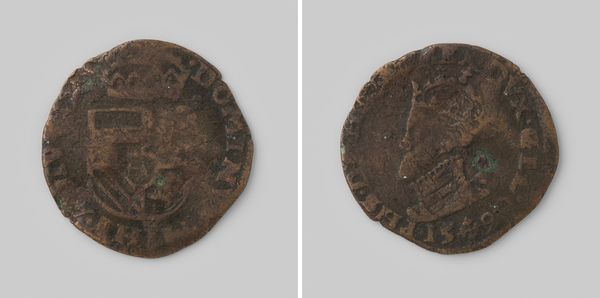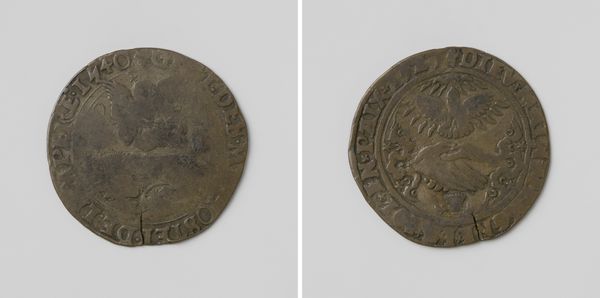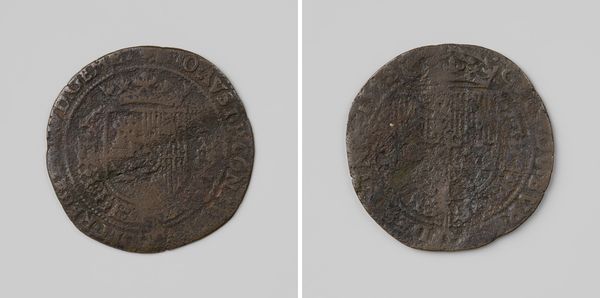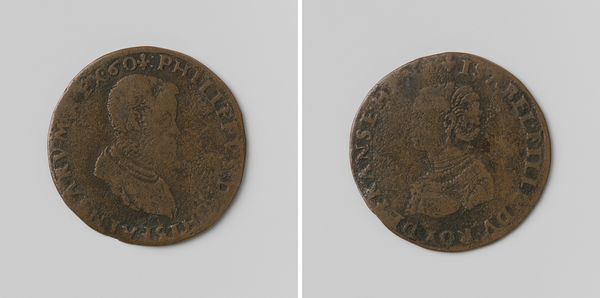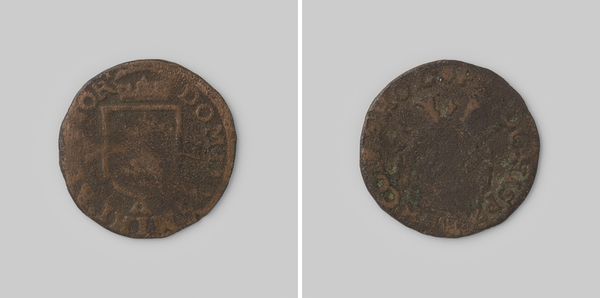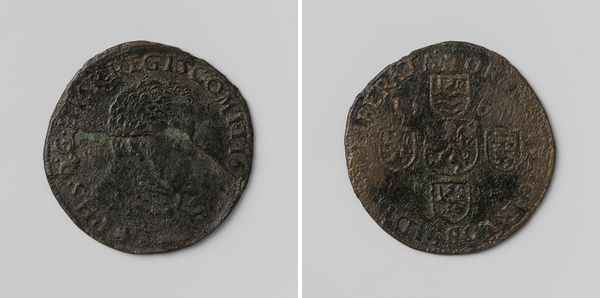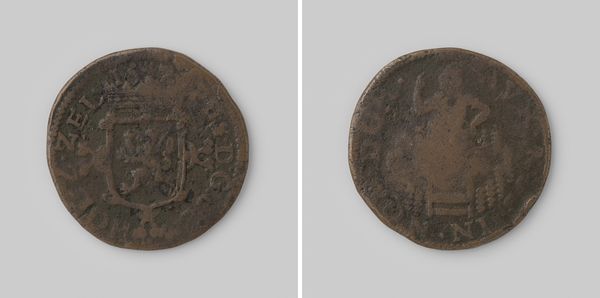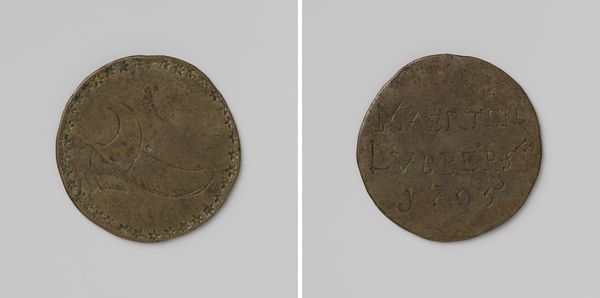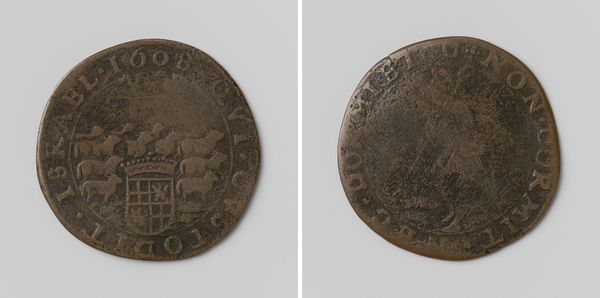
Karel V, Duits keizer, doet te Brussel afstand van het bewind over de Nederlanden, Milaan en Napels ten gunst van zijn zoon Filips, erfprins van Spanje 1555
0:00
0:00
carving, metal, sculpture
#
medieval
#
carving
#
metal
#
sculpture
#
sculpture
#
carved
Dimensions: diameter 2.9 cm, weight 3.64 gr
Copyright: Rijks Museum: Open Domain
This copper coin commemorates Karel V’s abdication in Brussels, passing rule of the Netherlands, Milan and Naples to his son, Philip, heir prince of Spain. Its small size belies the immense power it represents. The coin was likely made using a die-striking method. A design would be engraved into a hardened steel die, which was then used to impress the image onto a blank metal disk. The soft copper would be forced into the recesses of the die, creating a raised relief. The circular form and inscriptions along the edge are typical of coinage. The act of striking has imbued this humble copper disk with enormous social significance. It served as a form of propaganda, circulating an image of power and authority far and wide. While the artistry of the die engraver might go unacknowledged, their labor was essential to the coin’s function. The intrinsic value of the copper is minimal; its true worth lay in the message it carried. By considering the materials, the making process, and the coin’s historical context, we see that this is more than just currency. It’s a potent symbol of empire.
Comments
No comments
Be the first to comment and join the conversation on the ultimate creative platform.


